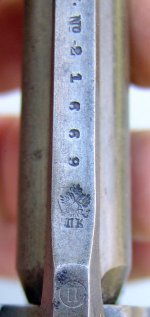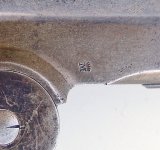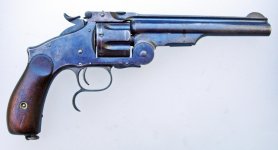K.R._Rabbit
Member
Hello Forum,
I have put some money down on a revolver that I thought was a S&W model 3 in .44 Russian. I realized this revolver was not collectable but my plan was to pick it up and load some original style ammo and shoot this revolver. It would be the oldest S&W in my collection, not a real collectable gun but one that would be fun to play with and own.
Now I am not sure it is a S&W. The store owner thought the gun had been refinished in the past and the original marking had been removed. There are a few very faint markings on this revolver and I would like your take on this piece.




I have put some money down on a revolver that I thought was a S&W model 3 in .44 Russian. I realized this revolver was not collectable but my plan was to pick it up and load some original style ammo and shoot this revolver. It would be the oldest S&W in my collection, not a real collectable gun but one that would be fun to play with and own.
Now I am not sure it is a S&W. The store owner thought the gun had been refinished in the past and the original marking had been removed. There are a few very faint markings on this revolver and I would like your take on this piece.







